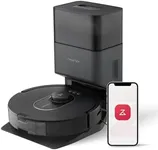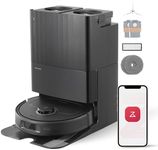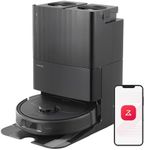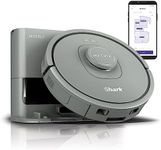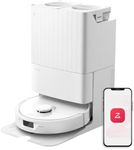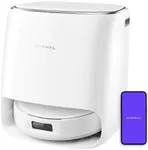Buying Guide for the Best Robot Vacuum For Pets
Choosing a robot vacuum for homes with pets can make cleaning much easier, especially when dealing with fur, dander, and the occasional mess. The right robot vacuum can help keep your floors tidy with minimal effort, but it's important to focus on features that handle pet hair and adapt to your living space. Understanding the key specifications will help you find a model that fits your needs and lifestyle.Suction PowerSuction power refers to how strongly the vacuum can pull in dirt, dust, and pet hair from your floors. This is especially important for pet owners because pet hair can get embedded in carpets and scatter across hard floors. Suction power is often measured in Pascals (Pa) or sometimes described in terms like 'high' or 'turbo.' Lower suction levels (under 1000 Pa) are usually fine for light cleaning and hard floors, while mid-range (1000-2000 Pa) can handle most pet hair on both carpets and hard floors. Higher suction (over 2000 Pa) is best for thick carpets or homes with multiple pets. If you have shedding pets or a mix of floor types, look for a vacuum with adjustable or strong suction.
Brush DesignThe brush design determines how well the vacuum can pick up pet hair and prevent tangles. There are usually two types: bristle brushes and rubber or silicone brushes. Bristle brushes can be effective but may get tangled with long pet hair, requiring more maintenance. Rubber or silicone brushes are better at resisting tangles and are easier to clean, making them ideal for homes with pets that shed a lot. If you have long-haired pets, prioritize a vacuum with tangle-free or self-cleaning brush designs.
Filtration SystemA good filtration system traps fine dust, dander, and allergens, which is important for pet owners, especially if anyone in the home has allergies. HEPA filters are the gold standard, capturing tiny particles and keeping the air cleaner. Some vacuums have basic filters that catch larger debris but may let fine particles escape. If allergies are a concern, look for a vacuum with a HEPA or high-efficiency filter. Otherwise, a standard filter may be sufficient for general cleaning.
Dustbin CapacityDustbin capacity tells you how much dirt and hair the vacuum can hold before it needs to be emptied. Pet hair can fill up a dustbin quickly, so a larger capacity means less frequent emptying. Small bins (under 0.4 liters) are fine for light cleaning or small spaces, while medium (0.4-0.6 liters) suits most average homes. Large bins (over 0.6 liters) are best for multiple pets or bigger homes. If you have several pets or a large area to clean, choose a vacuum with a bigger dustbin.
Navigation and MappingNavigation and mapping features help the robot vacuum move efficiently around your home, avoiding obstacles and covering all areas. Basic models use random navigation, which can miss spots or get stuck, while advanced models use sensors or cameras to map your home and clean in organized patterns. If you have a complex layout, lots of furniture, or want to ensure thorough cleaning, look for a vacuum with smart mapping and obstacle detection. For simple, open spaces, basic navigation may be enough.
Noise LevelNoise level is how loud the vacuum is while running, usually measured in decibels (dB). Pet owners may want a quieter vacuum to avoid stressing their animals. Quiet models (under 60 dB) are gentle and less likely to disturb pets, while standard models (60-70 dB) are about as loud as normal conversation. Louder models (over 70 dB) may be more powerful but can be disruptive. If your pets are sensitive to noise, prioritize a quieter vacuum.
App and Smart FeaturesApp and smart features let you control the vacuum from your phone, schedule cleanings, or connect to smart home systems. Some vacuums also let you set no-go zones or customize cleaning routines. If you like convenience and want to automate cleaning, look for a model with a user-friendly app and smart home compatibility. If you prefer simple operation, a basic model with manual controls may be enough.
